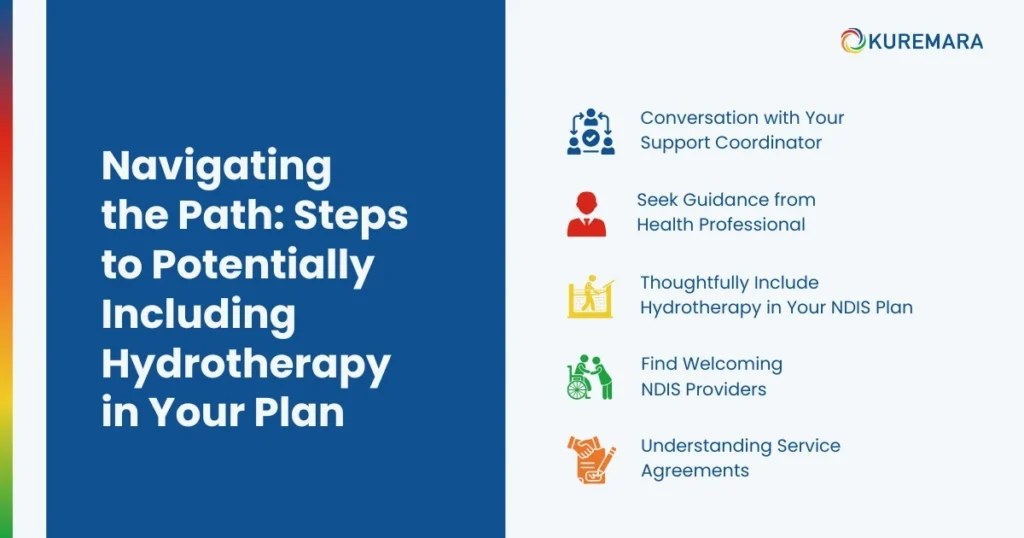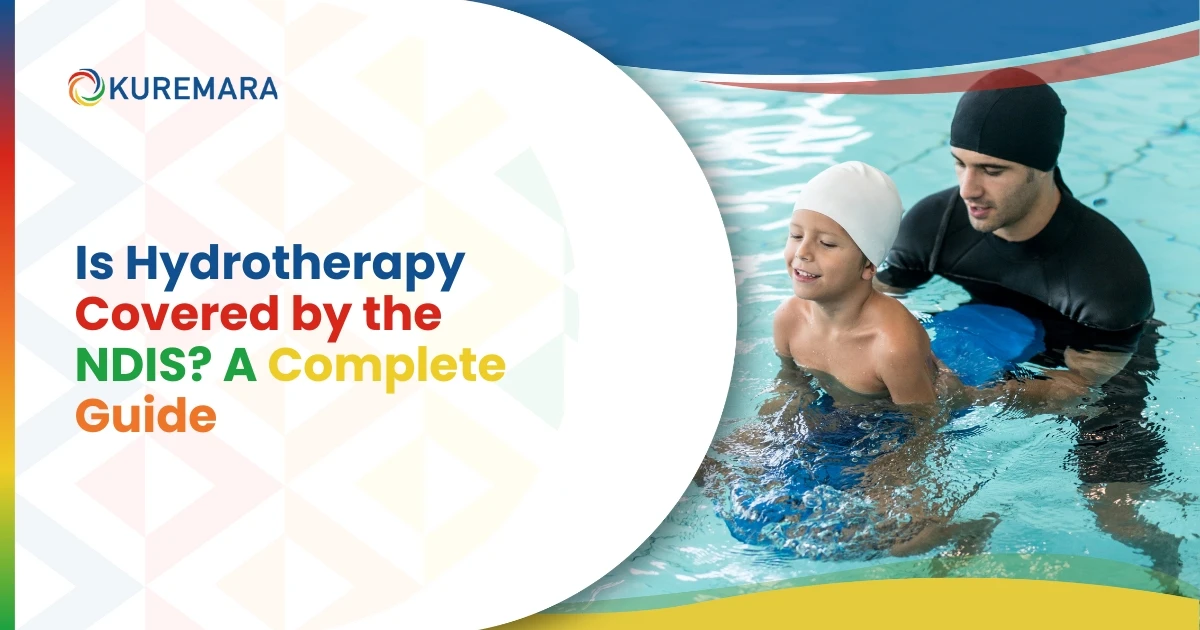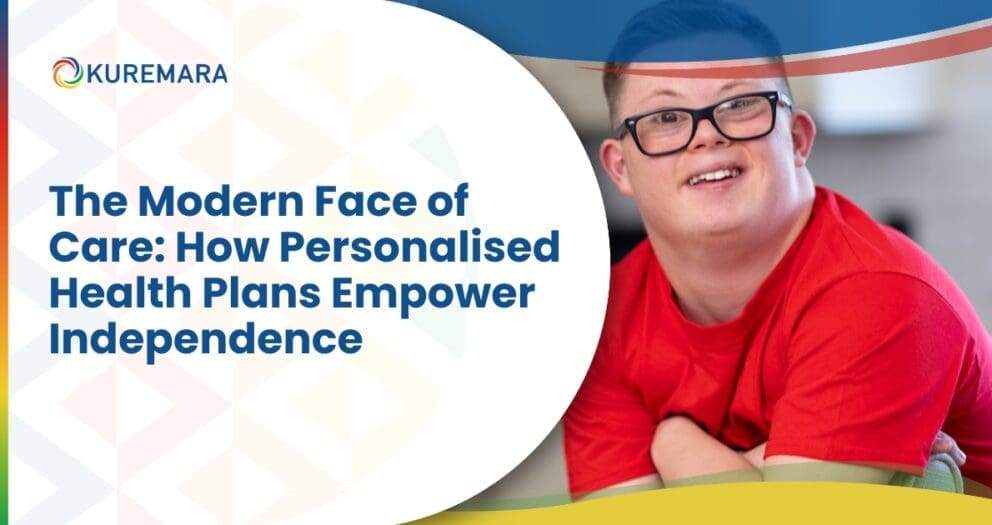Taking the plunge into therapeutic options can be life-changing for people with disabilities. Among the many supports available in Australia, hydrotherapy stands out for its unique benefits, leveraging the natural properties of water to improve physical function and overall wellbeing. If you’re an NDIS participant or their carer, you might be wondering: Is hydrotherapy covered by the NDIS? This guide is designed to provide you with a clear and comprehensive answer.
Introduction: Diving into Hydrotherapy and the NDIS
What is Hydrotherapy?
More than just a swim, hydrotherapy (often referred to as aquatic physiotherapy) is a targeted therapy conducted in a heated pool, typically led by a trained physiotherapist or exercise physiologist. The warm water and buoyancy reduce the effects of gravity, making movement easier and less painful. The resistance of the water also provides a gentle yet effective way to build strength and improve mobility.
How Hydrotherapy Can Benefit People with Disabilities

Hydrotherapy holds beautiful potential to contribute to your personal goals within your NDIS plan. Think about how it could help you:
-
- Move with More Freedom: The water’s support can unlock a greater range of movement.
- Find Relief from Discomfort: Warm water has a soothing touch that can ease muscle tension and joint stiffness.
- Build Your Strength Gently: Work with the water’s resistance at your own pace to become stronger.
- Enhance Your Balance and Confidence: Practice movements in a safe, supportive environment, building stability.
- Nourish Your Wellbeing: The calming feeling of the water can bring a sense of peace and reduce feelings of stress.
- Step Towards Greater Independence: Achieving physical milestones in the water can empower you in your daily life.
The Role of the NDIS in Funding Disability Supports
The National Disability Insurance Scheme (NDIS) provides funding to eligible Australians with permanent and significant disabilities to access the supports and services they need to live an ordinary life. Therapeutic supports, like hydrotherapy, play a crucial role in helping participants achieve their individual goals outlined in their NDIS plan.
The NDIS and Therapeutic Supports: Where Hydrotherapy Fits In
Understanding how the NDIS categorises support is key to knowing if hydrotherapy is covered.
Understanding NDIS Support Categories
The NDIS plan funding is generally divided into three main budgets:
-
- Core Supports: Assists with daily living activities, consumables, and social participation.
- Capacity Building Supports: Helps you build skills and independence.
- Capital Supports: Covers assistive technology, equipment, and home modifications.
Hydrotherapy within Capacity Building: Nurturing Your Daily Life and Wellbeing
Hydrotherapy is most commonly funded under the Capacity Building budget. This is because its primary aim is to help you build skills and improve your functional capacity and overall health.
- Supporting Your Daily Life and Wellbeing: Hydrotherapy sessions can beautifully align with goals focused on enhancing your ability to manage daily tasks, improve your physical health, and boost your overall sense of wellness. Whether it’s improving your ability to walk, participate in activities, or manage pain, hydrotherapy can be a valuable support.
- The Warmth of Professional Guidance: For NDIS funding in this category, it’s important that your hydrotherapy is guided by a qualified allied health professional, such as a physiotherapist or exercise physiologist, who is either NDIS registered or you are managing your plan yourself. Their expertise ensures the therapy is tailored to your specific needs and goals.
Considering Core Supports for Accessing Hydrotherapy
While the therapy itself usually sits under Capacity Building, sometimes the practicalities of getting to and from hydrotherapy can involve your Core Supports. If your plan includes funding for a support worker to help you with transport or provide assistance during your session, these costs could potentially be claimed under your Core Supports budget, provided they are seen as reasonable and necessary and are part of your plan.
Eligibility and “Reasonable and Necessary”: Key Criteria for NDIS Funding
Simply wanting hydrotherapy is not enough for NDIS funding. It must meet specific criteria.
Understanding “Reasonable and Necessary”: A Personal Fit

The idea of “reasonable and necessary” in the NDIS is all about ensuring your supports are right for you. It means the support should:
-
- Be connected to your disability.
- Bring a positive difference to your life.
- Offer good value.
- Be supported by evidence that it’s effective and helpful.
- Not be something that other community services should typically provide.
Think about how hydrotherapy is a “reasonable and necessary” step towards achieving your personal goals.
Connecting Hydrotherapy to What Matters Most to You (Your NDIS Goals)
Your NDIS plan is a reflection of your aspirations and what you want to achieve. To include hydrotherapy, it’s truly helpful to show how it will gently support you in reaching your specific goals. Think about how improved movement or reduced pain from hydrotherapy could open up new possibilities in your life.
Sharing Your Story: Providing Evidence
Sharing information about how hydrotherapy can help you is a key part of the process. This often involves a thoughtful assessment and report from a qualified allied health professional who understands your needs. Their report can beautifully illustrate:
-
- Your current abilities and how your disability affects you.
- How hydrotherapy is specifically suited to support your needs.
- The positive changes you hope to see and how they link to your NDIS goals.
- Their professional recommendation for how often and for how long hydrotherapy would be beneficial.
Ongoing notes and reports from your therapist are also like gentle stepping stones, providing the NDIS with ongoing evidence of the positive impact hydrotherapy is having for you during plan reviews.
A Provider’s Perspective: Empowering Choice with Kuremara
As an NDIS registered provider operating across Australia, Kuremara understands the diverse needs of participants and the importance of informed choice. While Kuremara may not directly offer hydrotherapy services, their perspective is one of support and empowerment. They are committed to providing participants with detailed and helpful information about hydrotherapy as a potential therapeutic support under the NDIS. By equipping participants with knowledge about what hydrotherapy is, its potential benefits, and how it can align with NDIS goals, Kuremara helps individuals feel confident in exploring this option themselves and choosing a hydrotherapy provider that best suits their needs and preferences. This approach underscores the NDIS’s emphasis on participant control and the right to make informed decisions about one’s own supports.
Navigating the NDIS Process for Hydrotherapy

So, you believe hydrotherapy could benefit you and align with your goals. What are the steps to potentially getting it funded?
- Have a Conversation with Your LAC or Support Coordinator: If you have a Local Area Coordinator (LAC) or a Support Coordinator, they are your valuable guides. Share your thoughts and hopes about hydrotherapy with them and how you feel it could help you move closer to your goals. They can offer support and guidance throughout the journey.
- Seek Guidance from an Allied Health Professional: Connect with a physiotherapist or exercise physiologist who has experience providing hydrotherapy for people with disabilities. They can gently assess your individual needs, explore the potential benefits with you, and provide a formal report that recommends hydrotherapy as a helpful support.
- Thoughtfully Include Hydrotherapy in Your NDIS Plan: When it’s time to create or review your NDIS plan, make sure that hydrotherapy is included as a requested support. Clearly connect it to the goals you’ve set for yourself, supported by the therapist’s insightful report.
- Finding Welcoming NDIS Registered Providers: Look for hydrotherapy providers in your local area who are registered with the NDIS. The NDIS Provider Finder tool can be a helpful resource, or your LAC or Support Coordinator might have wonderful recommendations.
- Understanding Service Agreements: Once your NDIS plan includes funding for hydrotherapy, you’ll create a service agreement with your chosen provider. This is a shared understanding that outlines the supports they will provide, the cost, and how you will work together.
Understanding the Cost of NDIS Hydrotherapy
One common question is about the cost of hydrotherapy sessions under the NDIS. It’s natural to wonder about the financial aspect of hydrotherapy sessions within the NDIS.
A Glimpse at Typical Costs in Australia
The cost of individual NDIS hydrotherapy sessions in Australia can vary. Factors like the length of the session, whether it’s just you or a small group, the provider’s fees, and where they are located all play a part. Based on information from various providers, you might typically find individual sessions ranging from approximately $95 to $240 per hour.
-
- Shorter sessions (perhaps 30 minutes) could be in the range of $50 to $100.
- Longer sessions (like a full hour) might range from $100 to $240.
- Joining a group session is usually a more budget-friendly option per person.
It’s always a good idea to have a clear conversation with your chosen provider about their exact fees and to ensure they align with the NDIS Price Guide for therapeutic supports.
Connecting with the NDIS Price Guide
The NDIS sets price limits for therapeutic supports as a way to help ensure that participants receive good value. The cost of NDIS-funded hydrotherapy sessions is generally guided by the rates set out in the NDIS Pricing Arrangements and Price Limits for allied health professionals (like Physiotherapists or Exercise Physiologists) under the Therapeutic Supports category.
Things to Keep in Mind: Potential Additional Costs
While the sessional fee covers the therapist’s time and expertise, sometimes there might be additional small costs, such as entry to the pool facility. It’s helpful to clarify with your provider whether pool entry is part of their session fee or if it’s an extra you need to consider (and potentially claim separately if it’s eligible and included in your plan). If your therapy comes to you (mobile hydrotherapy), travel costs might also be part of the agreement, and these should be discussed and agreed upon with your provider in line with NDIS guidelines.
How Funding is Managed
How the hydrotherapy sessions are paid for depends on how your NDIS plan is managed:
-
- Self-Managed: You receive the funding directly and pay the provider yourself, then claim reimbursement from the NDIS.
- Plan-Managed: Your Plan Manager pays the provider on your behalf from your NDIS funds.
- NDIA-Managed: The NDIS pays the provider directly. You need to ensure the provider is NDIS registered.
Maximising Your NDIS Plan for Hydrotherapy
To get the most out of your NDIS funding for hydrotherapy:
-
- Building Strong Connections with Your Support Team: Keep the lines of communication open with your therapist about how you’re progressing and any shifts in your goals. Work closely with your Support Coordinator, if you have one, to navigate your plan and relationships with your providers smoothly.
- Celebrating Progress and Sharing for Plan Reviews: Regularly take a moment to celebrate your progress with your therapist. Ensure they provide reports that beautifully capture how hydrotherapy is helping you move towards your NDIS goals. These reports are like stepping stones, providing essential evidence for your plan reviews to support continued funding.
- Empowering Your Voice: Your voice matters! Don’t hesitate to share your needs, preferences, and how you’re feeling with your LAC, Support Coordinator, and therapists. This helps ensure your hydrotherapy program is truly tailored to support you.
Conclusion: Making a Joyful Splash with NDIS-Funded Hydrotherapy
In wrapping up, the wonderful news is yes, hydrotherapy can indeed be a part of your NDIS support, provided it’s seen as “reasonable and necessary” to help you achieve your disability-related goals and is guided by a qualified professional. It’s most often funded through the Capacity Building budget, focusing on supporting your improved daily living and overall health and wellbeing.
Hydrotherapy offers a beautiful opportunity for NDIS participants to gently enhance their physical abilities, find relief from discomfort, and enrich their overall sense of wellbeing in a nurturing and therapeutic water environment. By understanding how the NDIS works, thoughtfully connecting hydrotherapy to your personal goals, and collaborating with supportive professionals, you can potentially make a joyful splash and access this beneficial therapy through your NDIS plan.
 care@kuremara.com.au
care@kuremara.com.au





